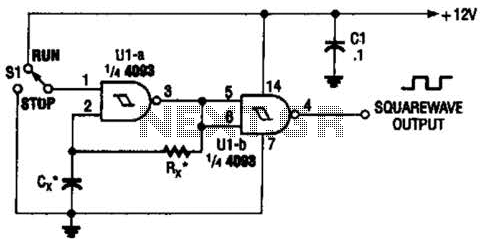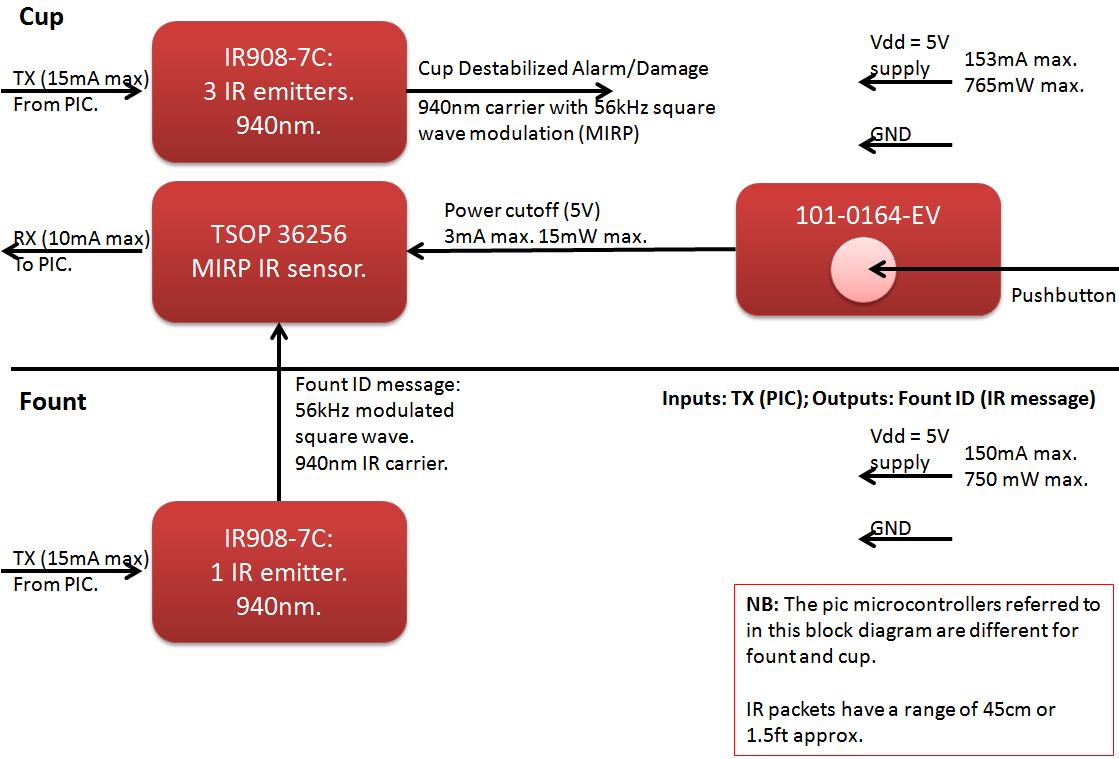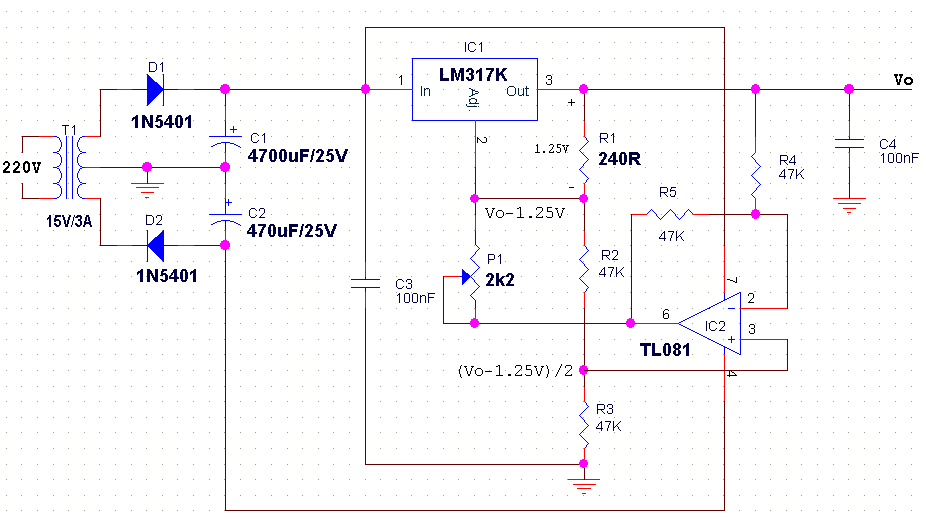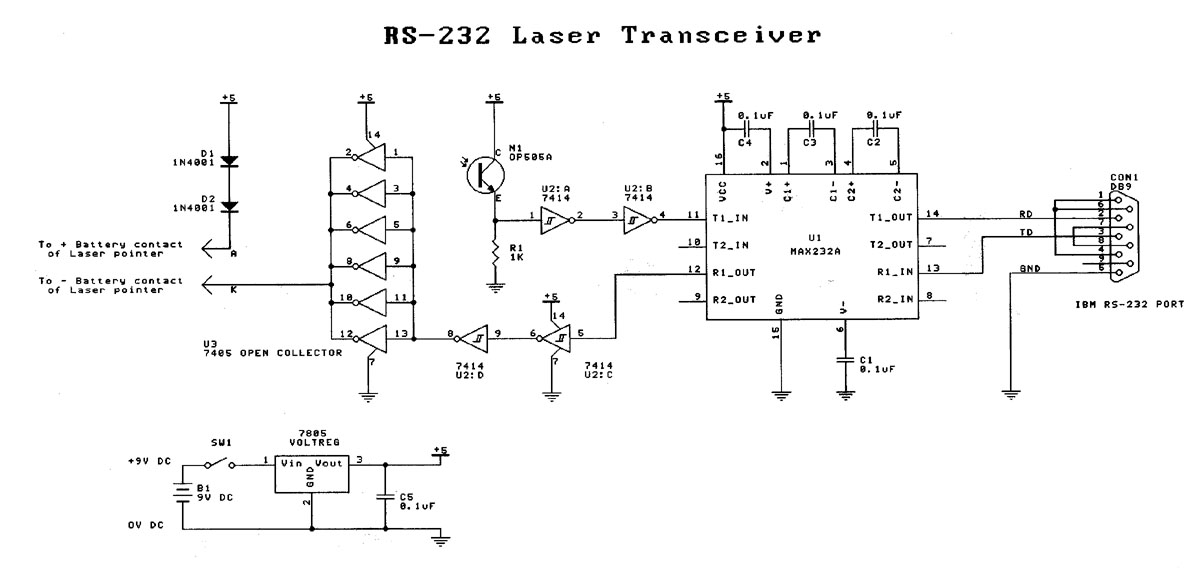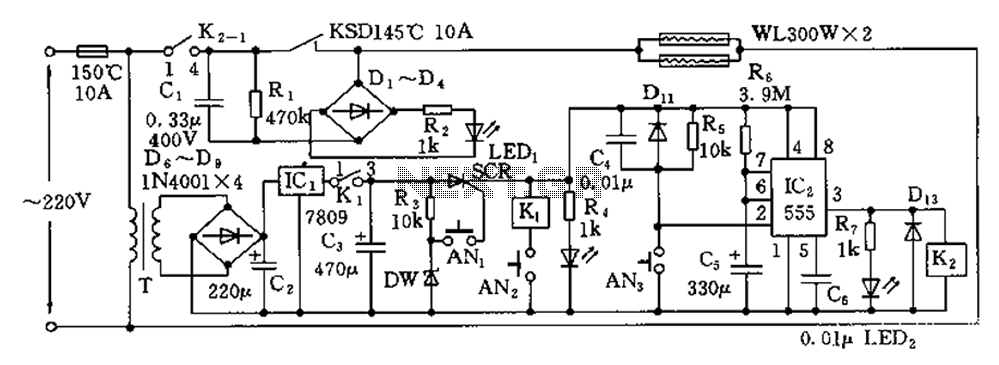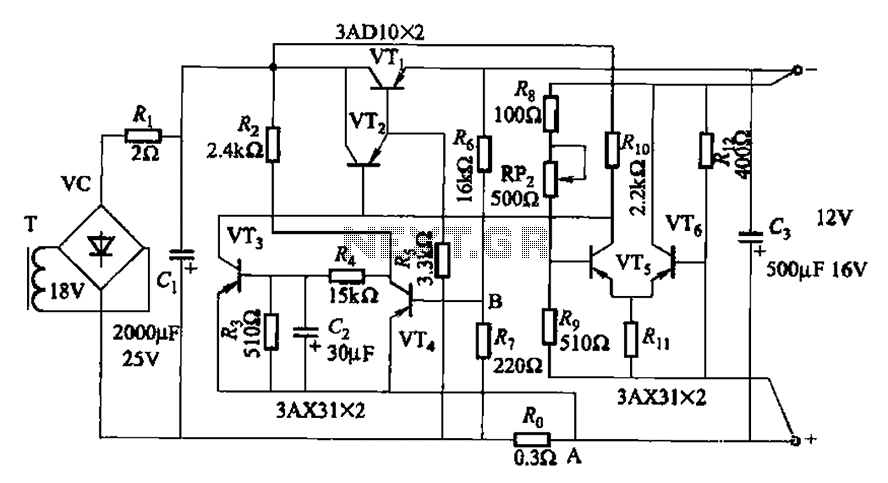
ic-7805 based 5V breadboard mini PSU circuit with explanation
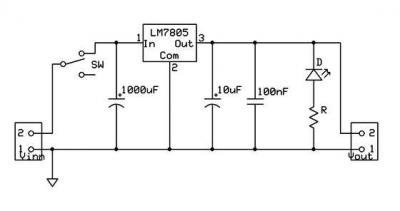
A micro power supply unit (PSU) is designed to power a breadboard with a voltage output of 5 volts. It can be connected to a 9V battery, a 12V source, or any other direct current (DC) power supply ranging from 8 to 18 volts. Instructions for constructing your own mini 5V power supply can be found on the referenced site.
This micro PSU circuit typically employs a voltage regulator, such as the LM7805, which is a common linear voltage regulator capable of delivering a stable 5V output. The input voltage must be within the specified range (8V to 18V) to ensure proper operation. The circuit design may also include input and output capacitors to filter voltage spikes and stabilize the output.
To construct the micro PSU, the following components are generally required:
1. **Voltage Regulator (LM7805)**: This component regulates the input voltage down to 5V, ensuring a stable power supply for the breadboard.
2. **Input Capacitor (C1)**: Typically a 0.33 µF ceramic capacitor placed close to the input pin of the voltage regulator to filter high-frequency noise.
3. **Output Capacitor (C2)**: A 0.1 µF ceramic capacitor connected to the output pin of the regulator to improve transient response and stability.
4. **Heat Sink**: Depending on the load current, a heat sink may be necessary to dissipate heat generated by the voltage regulator, especially when the input voltage is significantly higher than the output voltage.
5. **DC Power Source**: A battery or wall adapter providing a voltage within the specified range (preferably regulated) to ensure reliability.
The circuit can be assembled on a breadboard for prototyping, allowing for easy modifications and testing. Proper connections should be made, ensuring that the input voltage is applied to the correct pins of the voltage regulator. Once assembled, the output can be tested with a multimeter to confirm that the voltage is stable at 5V before connecting any sensitive components.
This micro PSU is ideal for powering various low-voltage electronic projects, particularly those involving microcontrollers, sensors, and other breadboard-compatible components. Proper attention to component selection and layout will ensure efficient operation and longevity of the power supply.Micro PSU to power a breadboard with 5 volts. Connect to 9V battery, 12V or any other DC powersource from 8 to 18 volts. Follow the instructions on the site below to build your own mini 5V power supply. Disclaimer All files are found using legitimate search engine techniques. This site does not and will not condone hacking into sites to create the links it list. We will and do assume that all links found on the search engines we use are obtained in a legal manner and the webmasters are aware of the links listed on the search engines. If you find a URL that belongs to you, and you did not realize that it was "open to the public", please use the report button to notify the blogmaster of your request to remove it or it will remove within 24 hours.
This is not an invitation for webblog haters to spam with requests to remove content they feel that is objectionable and or unacceptable. Proof of URL ownership is required. NOTICE: This Blog Has Already Been Reviewed And Accepted By Blogger. com 🔗 External reference
This micro PSU circuit typically employs a voltage regulator, such as the LM7805, which is a common linear voltage regulator capable of delivering a stable 5V output. The input voltage must be within the specified range (8V to 18V) to ensure proper operation. The circuit design may also include input and output capacitors to filter voltage spikes and stabilize the output.
To construct the micro PSU, the following components are generally required:
1. **Voltage Regulator (LM7805)**: This component regulates the input voltage down to 5V, ensuring a stable power supply for the breadboard.
2. **Input Capacitor (C1)**: Typically a 0.33 µF ceramic capacitor placed close to the input pin of the voltage regulator to filter high-frequency noise.
3. **Output Capacitor (C2)**: A 0.1 µF ceramic capacitor connected to the output pin of the regulator to improve transient response and stability.
4. **Heat Sink**: Depending on the load current, a heat sink may be necessary to dissipate heat generated by the voltage regulator, especially when the input voltage is significantly higher than the output voltage.
5. **DC Power Source**: A battery or wall adapter providing a voltage within the specified range (preferably regulated) to ensure reliability.
The circuit can be assembled on a breadboard for prototyping, allowing for easy modifications and testing. Proper connections should be made, ensuring that the input voltage is applied to the correct pins of the voltage regulator. Once assembled, the output can be tested with a multimeter to confirm that the voltage is stable at 5V before connecting any sensitive components.
This micro PSU is ideal for powering various low-voltage electronic projects, particularly those involving microcontrollers, sensors, and other breadboard-compatible components. Proper attention to component selection and layout will ensure efficient operation and longevity of the power supply.Micro PSU to power a breadboard with 5 volts. Connect to 9V battery, 12V or any other DC powersource from 8 to 18 volts. Follow the instructions on the site below to build your own mini 5V power supply. Disclaimer All files are found using legitimate search engine techniques. This site does not and will not condone hacking into sites to create the links it list. We will and do assume that all links found on the search engines we use are obtained in a legal manner and the webmasters are aware of the links listed on the search engines. If you find a URL that belongs to you, and you did not realize that it was "open to the public", please use the report button to notify the blogmaster of your request to remove it or it will remove within 24 hours.
This is not an invitation for webblog haters to spam with requests to remove content they feel that is objectionable and or unacceptable. Proof of URL ownership is required. NOTICE: This Blog Has Already Been Reviewed And Accepted By Blogger. com 🔗 External reference
